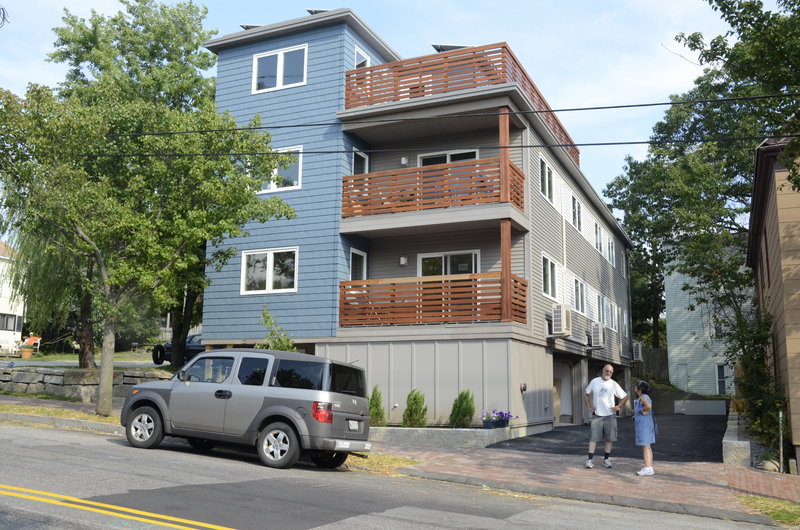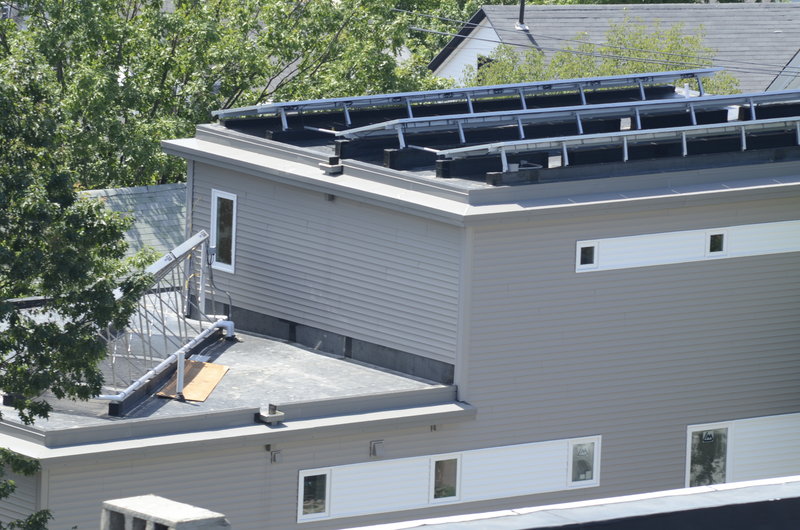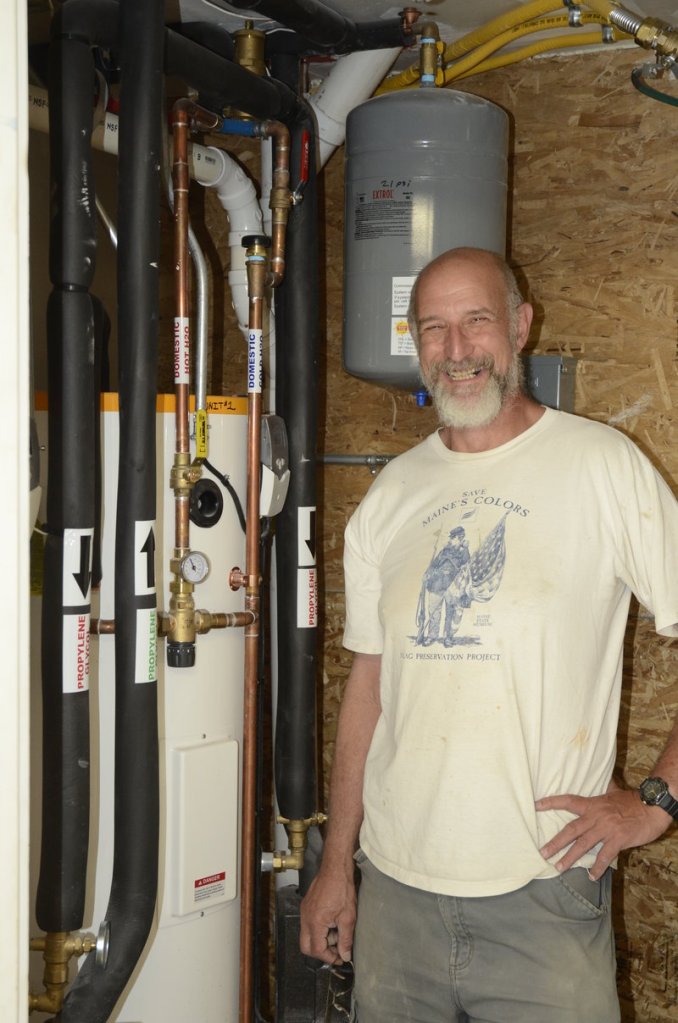Paul Ledman and his wife, Colleen Myers, are using the power of the sun and air to make their Portland home perfectly comfortable with minimal energy from outside sources. Ledman says cutting down on usage doesn’t mean sacrificing comfort.
They had a dream when they purchased a vacant lot on Munjoy Hill, a perfect site at 62 Cumberland Ave. Ledman’s vision included not only a magnificent view of Portland from the upper floors, but also a way to build so there would be abundant heat, hot water and air conditioning for less than what most of us pay to outside companies.
“If you don’t waste energy, you don’t need to keep buying it,” he said.
Together with general contractor Mike White, owner of Island Carpentry, Ledman found the right people to explore options, make decisions, and do the hands-on work of creating an energy-efficient home to provide spacious living for himself and his family, plus two bright, attractive apartments, totaling three stories of living space and a garage.
Ledman says he used three basic components in the heating and ventilating design, and although the equipment doesn’t need to be over-the-top expensive, it does need to be the correct equipment:
Insulation: Ledman says the key is “very, very tight” insulation. According to Maine Uniform Building and Energy Conservation Code, the minimum required R-value (measure of thermal resistance) in an exterior residential wall is 21. In Ledman’s house, it is approximately 44 in the exterior walls and 60 in the ceilings. His outside walls are more than 9 inches thick, so it stays warm inside in the winter and cool in the summer.
Heat recovery ventilators: These units continuously extract stale inside air and bring in fresh outside air, while recapturing and circulating inside heat.
In winter, no need to open the kitchen window while baking to cool off the room. That wastes heat. The heat recovery ventilators bring that heat to the other areas of living space.
Air source heat pumps: Four pumps on the outside of the building serve as the heating and air conditioning system. A simple user-friendly device that looks like a TV remote regulates room temperature.
Outside air (at any temperature above absolute zero, which is minus 459.67 degrees Fahrenheit), always contains some amount of heat, and the pump system moves this heat in either direction of temperature. Hot out? You’ve got air conditioning indoors. And in the dead of winter, you’ll be toasty warm.
Those three elements alone “would save people a fortune,” Ledman notes, and would decrease both bills and energy consumption. But “we went one step further — solar hot water and photovoltaics.”
Photovoltaic (solar) panels on the roof generate electricity for the house. As a bonus, extra power produced now can also be used later, in a bank of sorts: Ledman gets credit from Central Maine Power for power he doesn’t use, for use on cloudy days. And that’s not just because Ledman is such a nice guy. It’s the law. The building is “on the grid” with Central Maine Power, and this credit system is regulated by the Maine Public Utilities Commission.
When I toured his home in early August, Ledman’s energy systems had been running for just 17 days and had generated 1.200 kilowatt hours of energy — more than needed by any standard home in that amount of time.
Ninety hot water tubes on the roof as well give the entire building — with living space of 4,400 square feet — hot water in three water tanks. On sunny days, the hot water comes from the sun. On cloudy days, there’s a small automatic electric back-up, creating a seamless system.
No oil and no natural gas are used in the building. The only gas used is propane for the kitchen stoves, a personal preference by Ledman and Myers.
The building is energy efficient in a way that makes a difference to the home’s dwellers and to the environment. After five to six years, his initial investment will pay for itself, which includes the solar systems and extra insulation. After that, he says, “We’re saving.”
Plus, there is rental income. And a small residential elevator reflecting the concept of “age-in-place.”
Ledman and family plan to stay there a long, long time and realize that could mean a need for safe access for older persons living in a large house.
In the big picture, there is another savings. Environmentally, using solar panels and energy-efficient heating systems means less air pollution is generated from power plants that burn fossil fuels.
And Paul Ledman is one person who is doing his part to lessen the problem.
Kathy Eliscu is a freelance writer who lives in Westbrook.
Send questions/comments to the editors.





Success. Please wait for the page to reload. If the page does not reload within 5 seconds, please refresh the page.
Enter your email and password to access comments.
Hi, to comment on stories you must . This profile is in addition to your subscription and website login.
Already have a commenting profile? .
Invalid username/password.
Please check your email to confirm and complete your registration.
Only subscribers are eligible to post comments. Please subscribe or login first for digital access. Here’s why.
Use the form below to reset your password. When you've submitted your account email, we will send an email with a reset code.